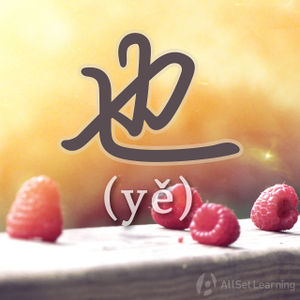Difference between revisions of "Expressing "both… and…" with "ji...you""
| Line 1: | Line 1: | ||
{{Grammar Box}} | {{Grammar Box}} | ||
| − | + | 既 can be used in conjunction with either 又 or 也 to express that something is "both A and B": | |
| − | == Structure | + | == Used with 又 == |
| + | |||
| + | ===Structure=== | ||
<div class="jiegou"> | <div class="jiegou"> | ||
| Line 21: | Line 23: | ||
</div> | </div> | ||
| − | == Structure | + | ==Used with 也== |
| + | |||
| + | ===Structure=== | ||
The structure can also be formed with 也, but here it is used primarily for verbs or verb phrases: | The structure can also be formed with 也, but here it is used primarily for verbs or verb phrases: | ||
| Line 30: | Line 34: | ||
</div> | </div> | ||
| − | == Examples == | + | === Examples === |
<div class="liju"> | <div class="liju"> | ||
Revision as of 03:24, 18 October 2012
既 can be used in conjunction with either 又 or 也 to express that something is "both A and B":
Contents
Used with 又
Structure
既 + A + 又 + B
A and B can be adjectives, verbs or short phrases. Most of the time A and B will take the same form i.e. if A is an adjective B will also be an adjective.
Examples
- 他 做 事情 既 快 又 好。
- 这 家 银行 的 服务既 热情 又周到。
- 这个 产品 的 设计 既 时尚 又 人性化。
Used with 也
Structure
The structure can also be formed with 也, but here it is used primarily for verbs or verb phrases:
既 + Verb/[verb phrase] + 也 + Verb/[verb phrase]
Examples
- 她 既 是 我 妈妈 也 是 我 朋友。
- 我们 既 去过 西欧 也 去 过 美国。
- 犯错 的时候,爸爸 既 不 打 我 也 不 骂 我。



